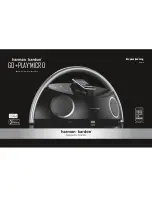
Design Philosophy
A studio monitor is a tool used to aurally “measure” the changes in an audio path. Ask any
seasoned recording professional what they think makes a great studio monitor and you’ll
get basically the same answers: “Accuracy, transparency, flat response, and the truth.”
Simply put, recording engineers want the electrical signal entering their monitor to be
reproduced mechanically by the transducers and they want this to occur without any
degradation or compromise to the original signal. Professionals depend upon their monitors
to deliver their artistic vision in a way that will translate as accurately as possible to a
variety of audio mediums. Technically, this is accomplished by designing a monitor that
addresses three critically important criteria: Spectral Balance, Distortion Management, and
Resonance Management.
Spectral Balance (Timbre)
Research confirms that a speaker with the proper spectral balance is most often
considered a great studio monitor.
Spectral balance is defined by:
• Smooth on-axis response
• Smooth octave to octave response
• Smooth off-axis response
From years of listening to feedback from some of the top engineers and producers, KRK
engineers have come to understand how a properly tuned monitor can become a valuable
recording tool.
The Expose E8B has been designed to be linear and as ruler flat as is humanly possible
so that what you hear represents the true nature of the audio material without coloration or
enhancement. You can be confident in the fact that your mixes will be accurate and phase
coherent.
Distortion Management
Any loss or addition to the audio signal is a distortion and this frequently occurs in the
speakers themselves. The E8B has extremely low speaker distortion, which is difficult to
achieve but was required for a monitor of this caliber.
Various amplifier distortions have been eliminated as well; the most common being
intermodulation, transient intermodulation, and harmonic distortion.
Distortion can also occur when the waveform is impacted by physical conditions such as
port turbulence and diffraction. KRK engineers implement design concepts that eliminate or
minimize these damaging conditions.
Resonance Management
Resonance is the tendency of something to vibrate at a particular frequency after the
energy source is removed. Resonances play a major role in impacting the performance of
a speaker. KRK design elements minimize driver and enclosure resonance.
4
Содержание Expose E8
Страница 1: ...U S E R G U I D E E X P O S É E 8 B B I A M P L I F I E D S T U D I O M O N I T O R ...
Страница 2: ...2 ...
Страница 16: ......


































